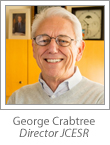Solving global energy needs
With population growth and industrialization, global energy needs continue to grow as well. Economic, political, and environmental issues are largely dictated by energy needs. The fifth international ECS Electrochemical Energy Summit (E2S) is designed to foster an exchange between leading policy makers and energy experts about society needs and technological energy solutions.
(MORE: Watch videos of the presentations.)
The E2S program focused around solar critical issues and renewable energy. It was held on Monday, October 12 and ran through Wednesday, October 14, 2015. The program on Monday focused on the DOE Hubs, featuring a Plenary and invited talks from the Joint Center for Energy Storage Research (JCESR), the Joint Center for Artificial Photosynthesis (JCAP), and the Energy Efficiency & Renewable Energy Fuel Cell Technologies Office (EERE FCTO). The program on Tuesday and Wednesday included keynote talks from five Energy Frontier Research Centers (EFRC) Directors, relevant invited speakers, and round table discussions.
Organizers
- Daniel Scherson, Case Western Reserve University
- Adam Weber, Lawrence Berkeley National Laboratory
- Krishnan Rajeshwar, University of Texas, Arlington
E2S Plenary Address
 U.S. Under Secretary for Science and Energy
U.S. Under Secretary for Science and Energy
Dr. Franklin (Lynn) M. Orr was sworn in as the Under Secretary for Science and Energy on December 17, 2014.
As the Under Secretary, Dr. Orr is the principal advisor to the Secretary and Deputy Secretary on clean energy technologies and science and energy research initiatives. As Under Secretary, he oversees DOE’s offices of Electricity Delivery and Energy Reliability, Energy Efficiency and Renewable Energy, Fossil Energy, Indian Energy Policy and Programs, Nuclear Energy, and Science. In total, these programs steward the majority of DOE’s National Laboratories.
Key Participants
 The Fluid Interface Reactions, Structures and Transport (FIRST) Energy Frontier Research Center
The Fluid Interface Reactions, Structures and Transport (FIRST) Energy Frontier Research Center
The overarching goal of the FIRST Center, which is in its sixth year of operation, is to develop fundamental understanding and validated, predictive models of the unique nanoscale environment at fluid-solid interfaces, that will enable transformative advances in electrical energy storage and electrocatalysis.
In order to achieve our goal, we integrate novel substrate and electrolyte synthesis and characterization, advanced electron (TEM) and scanning probe microscopies (SPM), neutron and X-ray scattering, and multiscale computational modeling ranging from quantum Monte Carlo to classical density functional theory approaches. Electrolytes investigated include aqueous, polar organic and room temperature ionic liquids (RTILs), representing increasing cost and electrochemical stability, and decreasing viscosity, competing factors in device performance.
Our recent efforts have focused on predicting the functionality of interfacial systems for capacitive and pseudocapacitive electrical energy storage in microdevice to grid scale applications.
 NorthEast Center for Chemical Energy Storage (NECCES)
NorthEast Center for Chemical Energy Storage (NECCES)
The mission of the NorthEast Center for Chemical Energy Storage (NECCES) is to develop an understanding of how key electrode reactions occur, and how they can be controlled to improve electrochemical performance, from the atomistic level to the macroscopic level throughout the life-time of the operating battery.
The processes that occur in batteries are complex, spanning a wide range of time and length scales. The team of experimentalists and theorists will make use of, and develop new methodologies to determine how model compound electrodes function in real time, as batteries are cycled.
The specific goals of NECCES are to close the gap between the realized and the theoretical energy density for intercalation compounds, to attain reversible multi-electron transfer in a cathode material using lithium, and to understand performance limiting transport in positive electrode structures from the local through the meso to the macroscale.
 NEES Energy Frontier Research Center
NEES Energy Frontier Research Center
NEES seeks to understand the electrochemical behavior of nanostructures, particularly in dense mesoscale architectures, for their use in energy storage: how to precisely control the multiple components of the nanostructures; how to densely pack and connect them to optimize their performance; how they behave – individually and collectively – during charging and discharging, and why; and how to make them safe and long-lasting over thousands of charging cycles.
With its past achievements creating and characterizing precise multi-component (heterogeneous) nanostructures, NEES now focuses on four areas: (1) understanding and controlling interfaces in storage nanostructures; (2) revealing new mesoscale challenges which dense assemblies of nanostructures pose, and the correlation of these architectures with electrochemical performance and degradation; (3) identifying the fundamental degradation mechanisms which accompany storage nanostructures and architectures; and (4) pursuing advances in the synthesis and characterization of 3-D nanostructured solid state storage configurations.
 The Center for Mesoscale Transport Properties, m2M, (molecular to mesoscale)
The Center for Mesoscale Transport Properties, m2M, (molecular to mesoscale)
Understanding the underlying ionic and electronic conduction phenomena is needed to further improve energy storage systems in order to bridge the gap between theoretical and achievable values.
During the operation of an energy storage system, ions and electrons are transported over multiple size domains where the sum of these processes leads to complex physics. Exploration of local conduction and transport phenomena is needed, encompassing investigations from the molecular to nano to mesoscale.
The vision of the m2M center is to minimize heat and maximize work of electrical energy storage devices. The center will accomplish this through understanding and ultimately controlling transport properties in complex battery systems with respect to multiple length scales. Redox active materials from several families are under investigation including 1D, 2D and 3D structures. Further, the influences of the electrode environment as well as the battery system on the electrochemical performance are key considerations.
 Center for Electrochemical Energy Science (CEES)
Center for Electrochemical Energy Science (CEES)
CEES seeks to develop a fundamental understanding of the lithium ion electrochemistry of oxides in lithium ion battery systems, through coordinated studies of three types of chemistries with a focus on model materials: Li ion insertion reactions, Li ion conversion reactions, and Li-O2/Li-ion hybrid reactions.
One broad theme in these studies is the role of interfaces in these reactions and I will also summarize recent work in which we seek to isolate and understand the role of interfacial reactivity in these systems using X-ray based approaches (e.g., X-ray reflectivity).
 Artificial Photosynthesis- Progress and Prospects (JCAP)
Artificial Photosynthesis- Progress and Prospects (JCAP)
JCAP is pioneering revolutionary methods of synthesizing transportation fuels simply by combining three of Earth’s most abundant resources: carbon dioxide, water, and sunlight.
The goal is to generate liquid hydrocarbon or alcohol fuel products whose heating value equals or exceeds that of methanol, using selective and efficient chemical pathways.
The grand challenge at the heart of solar fuels production is controlled catalysis. Over the last five years, JCAP made significant advances in solar-driven catalytic production of hydrogen from water — but as yet there remains no known catalyst, whether electrochemical or photoelectrochemical, which can reduce carbon dioxide with high efficiency and selectivity under mild conditions.
To tackle CO2 reduction, JCAP’s efforts are aligned along four fronts: experimental and theoretical discovery of fundamental electrocatalysis mechanisms and materials, experimental and theoretical discovery of photocatalysts and light absorbers, systems integration, and testbed prototyping.
 The Joint Center for Energy Storage Research (JCESR)
The Joint Center for Energy Storage Research (JCESR)
The Joint Center for Energy Storage Research (JCESR) seeks to establish next-generation electricity storage through a new research paradigm that unites discovery science, battery design, research prototyping and manufacturing collaboration.
JCESR focuses exclusively on beyond-lithium-ion batteries. Its vision is to transform transportation and the electricity grid with high performance, inexpensive electricity storage that enables widespread deployment of electric cars, broad penetration of wind and solar electricity and breaks the century-old constraint of matching instantaneous electricity generation with instantaneous electricity demand. Its mission is to deliver two prototypes, one for transportation and one for the grid, which when scaled to manufacturing are capable of delivering five times the energy density at one-fifth the cost of the commercial batteries available at its launch in 2012.
JCESR intends to leave three legacies: a library of fundamental science of the materials and phenomena of energy storage at atomic and molecular levels; two prototypes, one for transportation and one for the grid, that when scaled to manufacturing are capable of meeting JCESR’s aggressive performance and cost targets; and a new paradigm for battery research and development that integrates discovery science, battery design, research prototyping, and manufacturing collaboration.





